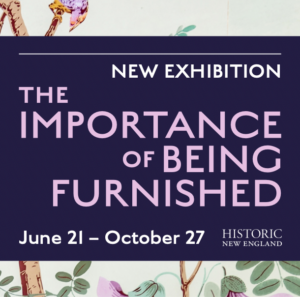 Eustis Estate
Eustis Estate
Importance of Being Furnished Intro

The Importance of Being Furnished tells the stories of four New England homes and their creators, examining the pioneering role bachelor designers played in historic preservation, collecting, and professional interior design. From the Gilded to the Jazz ages, these so-called “artistic” men were as admired as they were suspect; praised as style leaders, they were also perceived – whether accurately or not – to be homosexual, a label with potentially dangerous consequences. Reflecting a wide range of bachelor style from this era, their houses include Codman Estate in Lincoln, Massachusetts, ancestral seat of architect Ogden Codman Jr. (1863-1951); Pendleton House at the Rhode Island School of Design Museum, built to replicate the home of collector Charles Leonard Pendleton (1846-1904); Gibson House in Boston’s Back Bay, preserved by writer Charles Hammond Gibson Jr. (1874-1954); and Beauport, the Sleeper-McCann House in Gloucester, Massachusetts, the eclectic masterpiece of interior decorator Henry Davis Sleeper (1878-1934).
These men came of age at a pivotal moment for the American home. Transformed by the Anglo-American Aesthetic Movement, which prioritized art’s visual rather than its moralizing role, the home’s former aims – to raise a family and promote religious virtue – gave way to the “higher” calling of individual artistic expression. None proclaimed this approach more widely than Irish author Oscar Wilde (1854-1900). Calling upon the “youth of the land to reform American interiors, the writer conducted a year-long U.S. speaking tour in 1882 that included two stops in Boston; “The House Beautiful” was his most popular lecture. Following Wilde’s lead and defying their period’s expectation to become family men, these four homeowners developed a dazzling variety of style. In doing so, they heralded our own period’s insistence that a home should reflect its owner’s unique personality. – R. Tripp Evans, Guest Curator